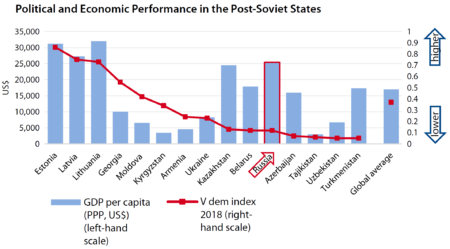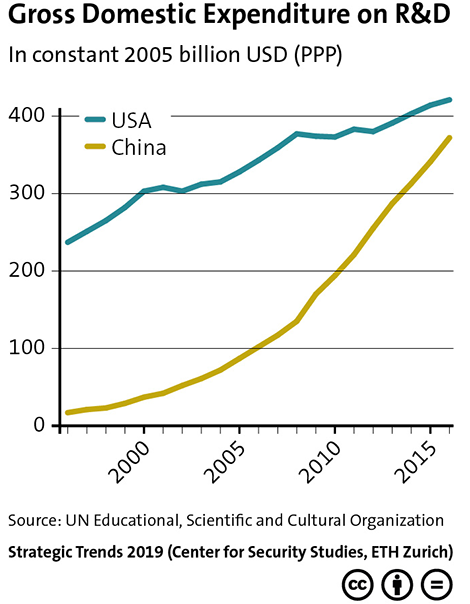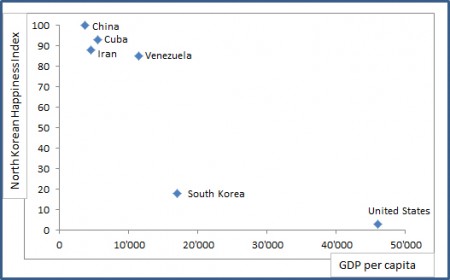
This graphic highlights Russia’s political and economic performance relative to other post-Soviet states. For more on Russia’s economy, read Russian Analytical Digest No. 241: Russia’s Economy.

This graphic highlights Russia’s political and economic performance relative to other post-Soviet states. For more on Russia’s economy, read Russian Analytical Digest No. 241: Russia’s Economy.

This week’s featured graphic charts the convergence of Chinese and US GDP expenditure on research and development. Does it suggest that the West is about to lose its edge in military technology? Michael Haas thinks so. Read his Strategic Trends 2019 chapter in on the eclipse of Western military technology superiority here to find out why. For more CSS charts, maps and graphics on economics, click here.

This article was originally published by Harvard International Review on 7 February 2017.
On August 29, 2016, the president of the Republic of Uzbekistan, Islam Karimov, suffered a cerebral hemorrhage. Four days later, the country lost its first and only president. Karimov had been exerting his influence in Uzbek politics since 1989 as the last secretary of the Communist Party of Uzbekistan, which later became the People’s Democratic Party of Uzbekistan (PDP). It may not come as a surprise that his rule was often mired by reports of human rights violations and declarations of autocratic powers to squash any political opposition.
Though the transition of power to the new provisional government may be relatively smooth, Uzbekistan remains fraught with challenges. For now, the Prime Minister Shavkat Mirziyoev has assumed temporary control until elections are held later this year. The new leadership of Uzbekistan must address the late Karimov’s legacy grappling with a fragile economy, the separatist movement in Karakalpastan, increasing interest of foreign powers in exerting influence over Central Asia, increasingly complex water allocation amongst Central Asian states, and backlash from the previous government’s repressive stance towards Islam.

It’s official: China is the happiest country on earth. North Korea comes a close second, while the American Empire (the U.S.) ranks at the bottom of the list. That’s according to a Happiness Index released by – surprise! – the Democratic People’s Republic of Korea. For anyone outside Kim Jong-il’s monopoly of information, the index is a surreal and somewhat comical attempt to legitimize the government’s performance. The idea of measuring happiness in general, however, is not quite as far-fetched.
Indices like GDP per capita continue to dominate national debates about social and economic progress, but critics of this practice are no longer ridiculed. Traditional gauges of prosperity are seriously flawed; they do not, for example, take into account environmental degradation or the exhaustion of natural resources. And that’s only part of the problem. The more important argument is that measures such as the GDP disregard most factors that make life worth living.
The Economist has recently launched a debate about whether or not new measures of economic and social progress are needed for 21st century economies. Proposing the motion, Emeritus Professor of Economics Richard Layard argued that quality of life, as people actually experience it, must be a key measure of progress and a central objective for any government. An overwhelming majority of the readers agreed.